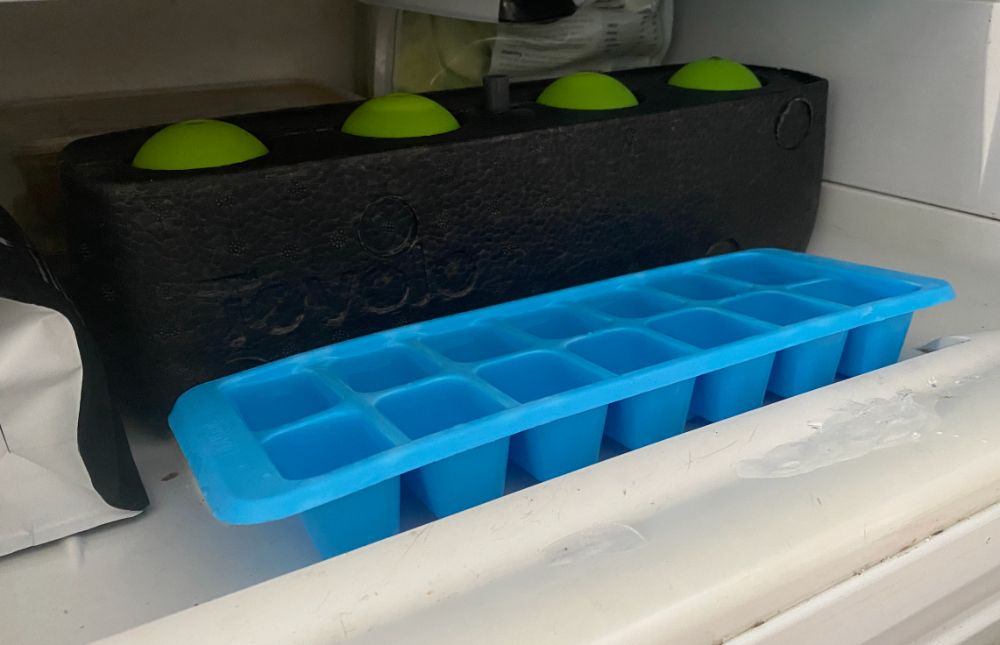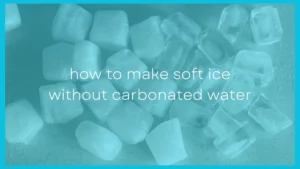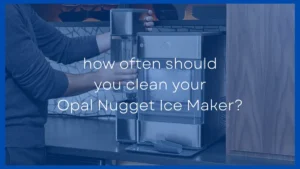Correctly storing your ice cubes in the freezer is essential to avoid clumpy, smelly, or contaminated cubes. A range of storage options is available to the average consumer, including paper and ziplock bags, containers, bowls, ice trays, and disposable ice bags. However, not all of these options protect your cubes properly.
The best way to store ice cubes in a freezer is with an airtight container such as a ziplock bag or specialized ice container. Paper bags can also be used to reduce excess moisture. However, paper can absorb contaminants and should only be used as secondary storage.
In this article, we’ll look at the reasons behind clumpy, smelly, and contaminated ice cubes. I’ll also explain the best ways to avoid these issues and how to properly store ice cubes in the freezer.
How To Store Ice Cubes To Avoid Sticking
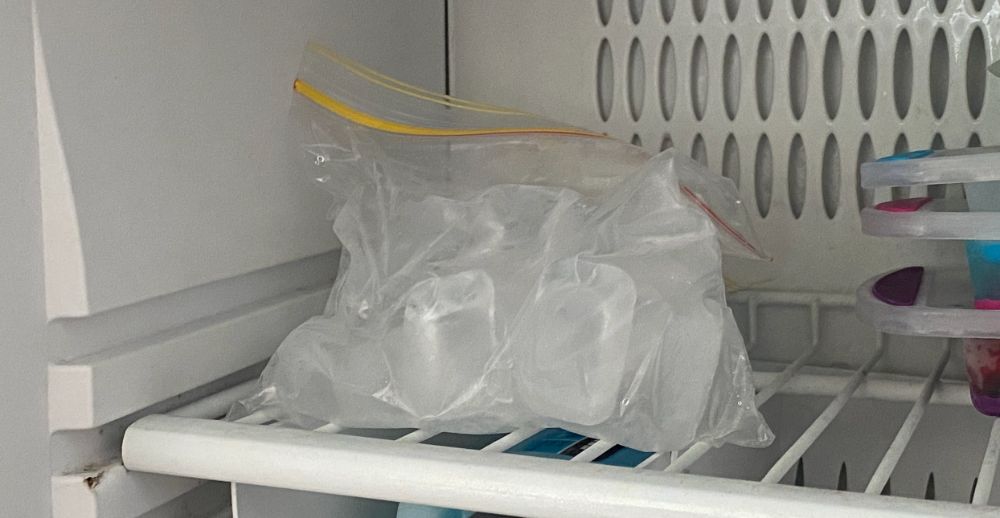
No one wants to go and grab some ice cubes from their freezer only to find them completely frozen together in one solid lump and requiring a chisel to get them apart. Even worse is when ice get thats funky smell from your freezer and it makes your drink taste terrible.
Unfortunately, ice cubes can get stuck together in the freezer, forming big clusters ice.
However, you can avoid this frustrating issue by storing your ice correctly in your freezer.
Since moisture infiltration and excessive weigh/pressure are the main causes of fused ice, storage can make all the difference.
Some people suggest storing ice cubes in a paper bag in your freezer to stop them sticking together. Paper is porous and will soak up the excess moisture before it reaches the ice. However, it also lets in contaminants and stale air. Therefore, paper bags should only be used as a moisture barrier in addition to proper containers.
Another way to avoid moisture build-up is to store the cubes as far away from the freezer opening as possible. Consider keeping them away from the door and behind other items.
There are lots of different ice cube tray hacks that help stop ice from sticking together and gives you better tasting ice.
Why Do Ice Cubes Stick Together?
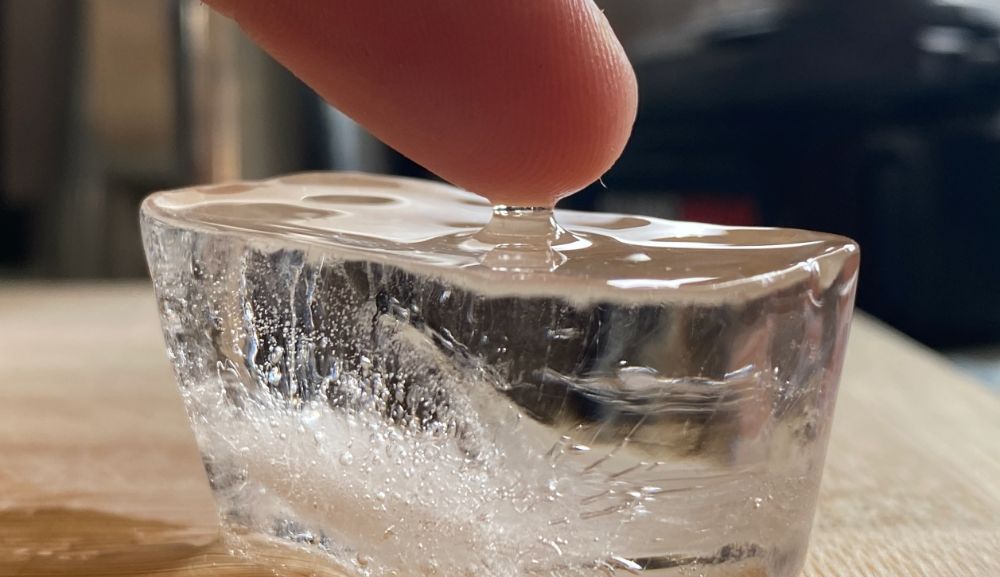
You may not realize this but on the outside of ice cubes is a very thin layer of water. This layer of water exists in equilibrium with some water molecules melting into water while others refreezing into ice.
Excessive moisture in the air as well as added pressure on the ice cube can cause the outside of the cube to melt and refreeze more than it otherwise would. This can cause it to fuze to the ice cubes next to it.
Ever seen how bags of ice are almost always stuck together when you buy them? This is a combination of weight and pressure (lots of other ice bags on top of your bag) as well as temperature being higher than a regular freezer and outside air moisture being a constant. Click here to learn how to stop bagged ice from sticking together.
Ice cubes stick together when excess moisture is introduced and freezes, joining the cubes with newly formed ice. Either the freezer door was left open too long, the freezer struggles to keep a consistent temperature or too much weight/pressure has been placed on the ice. The outside moisture layer freezes and fuses cubes that are touching together.
How To Store Ice Cubes To Avoid Smells
Another ice-related inconvenience is smelly cubes.
The smell of stale freezer or fragrant contents such as garlic and fish can often be soaked up by ice cubes. They may also taste funny due to the absorption of particles in the air. Since surrounding particles cause smelly cubes, storage is again the best solution. If you've got bad tasting ice but the water is fine then read this article or do the following:
There are two main ways to avoid smelly ice cubes:
- Using airtight containers
- Using baking soda
Using Airtight Containers
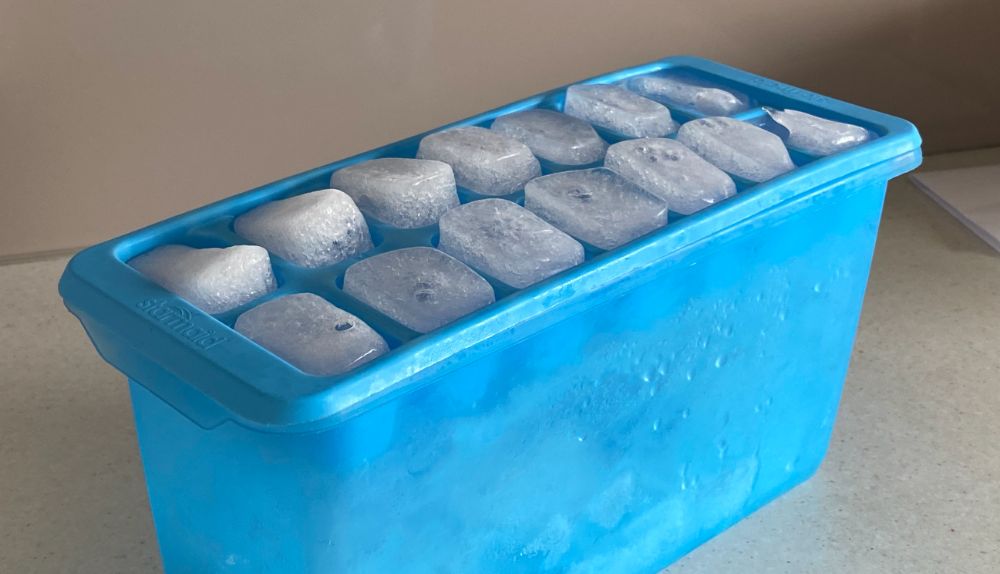
According to Alcademics, ice cubes should always be sealed in an airtight container. Doing so will restrict the number of particles absorbed by the cubes, as they are no longer exposed to the freezer air.
Ziplock bags should suffice and I've used this in my freezer especially when I'm storing clear ice I've made at home.
However, you can also purchase specialized containers such as this Artleo Ice Cube Tray with Storage Bin (available on Amazon.com).
This 3-piece set includes an easy release ice cube tray for easy ice removal and has an airtight lid that protects the ice from exposure to unwanted odors.
See the latest price of Artleo Ice Cube Tray With Bin at Amazon
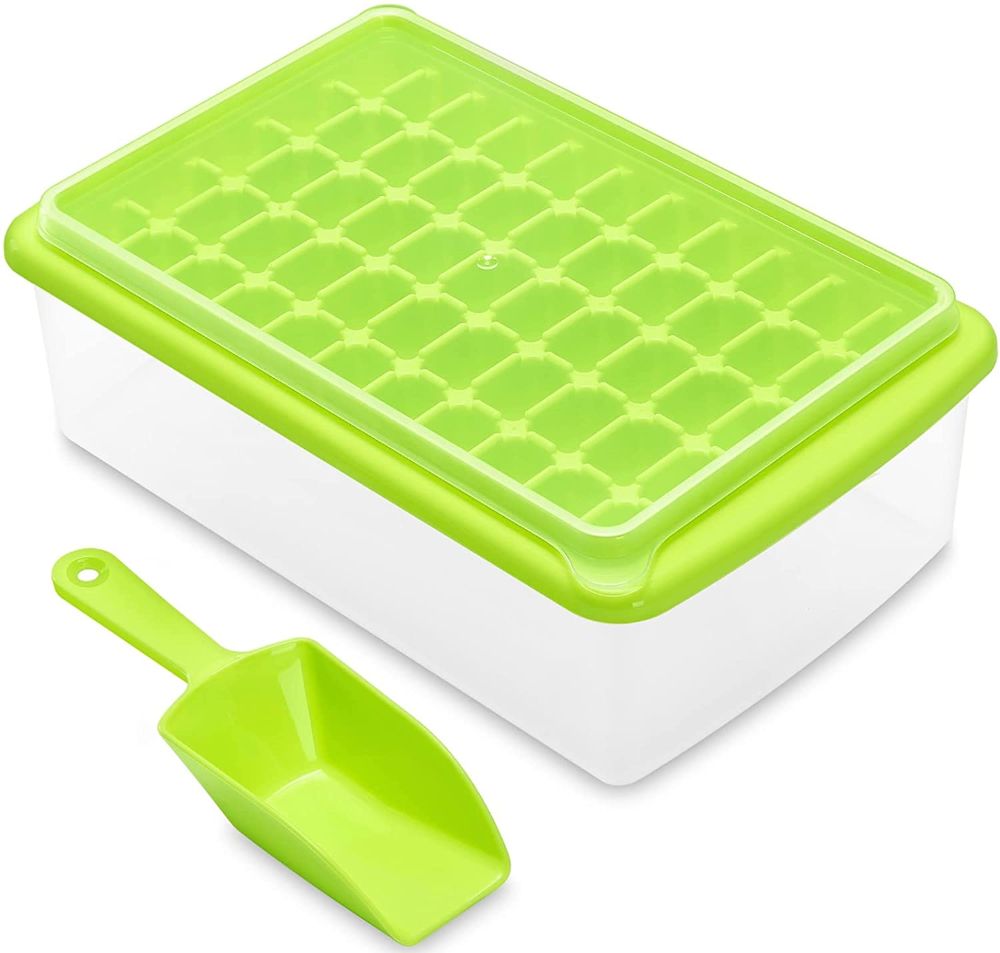
Using Baking Soda
Baking soda has long been used as a household deodorizer.
According to a laboratory comparison of odor control, baking soda is a successful deodorizer. It regulates pH levels, and its “anhydrous form” absorbs surrounding moisture.
Baking soda placed in an open packet in the freezer will soak up smelly particles, preventing ice cubes from doing the same. I have used this technique before and successfully deodorized a second-hand fridge by simply placing baking soda in the closed compartment for a day.
You can also use baking soda to clean your ice cube tray, makers, scoops, and containers. Make a cleaning solution such as this one suggested by Wikihow to reduce surrounding odors.
Why Do Ice Cubes Soak Up Smells?
Your freezer is likely filled with various food items, or it may be empty, leaving a stale scent throughout.
Ice cubes soak up smells when the surrounding odors inside the freezer are absorbed. Frozen water is permeable and will soak up particles around it. A freezer provides an enclosed environment that traps these smells and supports ice cube absorption.
How To Store Ice Cubes To Avoid Bacteria Contamination
Unfortunately, smelly, clumped ice cubes are not just an inconvenience. They can also cause food poisoning if exposed to harmful bacteria.
As explained in this article, ice cube absorption causes funky ice. The cubes taste and look bad, but they also pose a potential health hazard if their surroundings are contaminated.
Storing ice cubes in a clean, airtight container will minimize exposure to harmful bacteria.
Since paper bags are also porous, they cannot fully protect the cubes. Similarly, ice trays leave the cubes exposed to freezer air. Therefore, airtight containers are the safest option.
Some other considerations for safely storing cubes are:
- Keep all ice making and storing elements clean
- Don’t use glass or ceramics as they may support contaminants
- Don’t store ice with the scoop to avoid cross-contamination
Can Bad Ice Cubes Make You Sick?
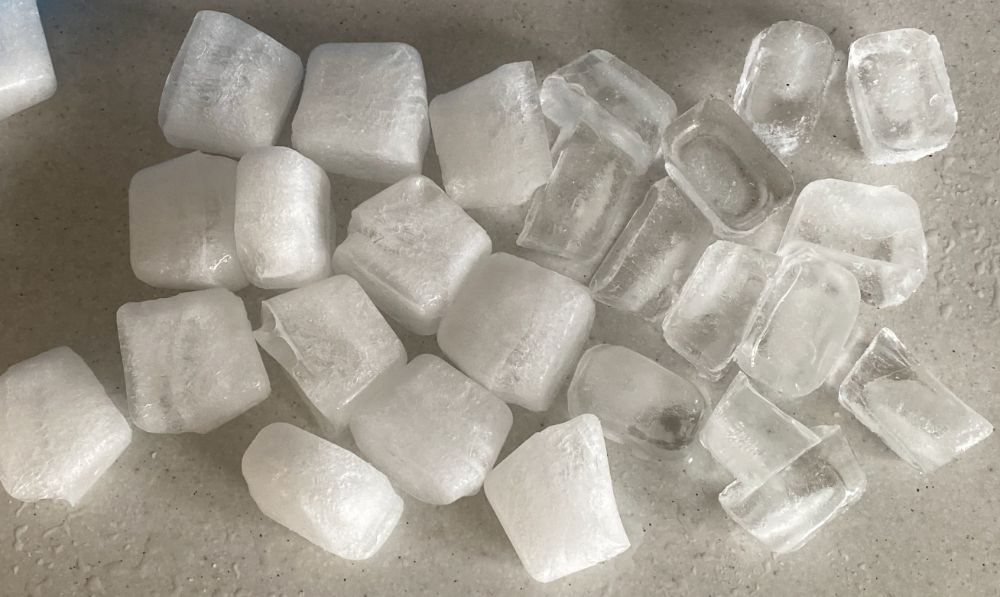
Bad ice cubes can make you sick since they’re exposed to contaminants and absorb bacteria. Any bacteria within the freezer can be soaked up by exposed ice. Once the ice is consumed, and bacteria is ingested, the cubes can cause food poisoning.
According to Hygiene Food Safety, cold environments don’t kill bacteria. Therefore, it’s crucial to store ice cubes correctly to avoid food safety issues.
While cloudy ice is safe to consume (it's just ice with air bubbles in it) if your ice is smelling or tasting funky you should throw it away, and give your ice cube tray and a really good wash before making new ice.
Conclusion
You can avoid clumpy, smelly, and contaminated ice by correctly storing ice cubes. Bad ice is mainly caused by excess moisture, odors, and bacteria being absorbed.
The key, therefore, is to preserve your ice cubes with adequate storage measures. Avoid using paper bags alone, as they are permeable and soak up surrounding particles. Instead, opt for clean, airtight containers that reduce moisture and shield your ice cubes.

